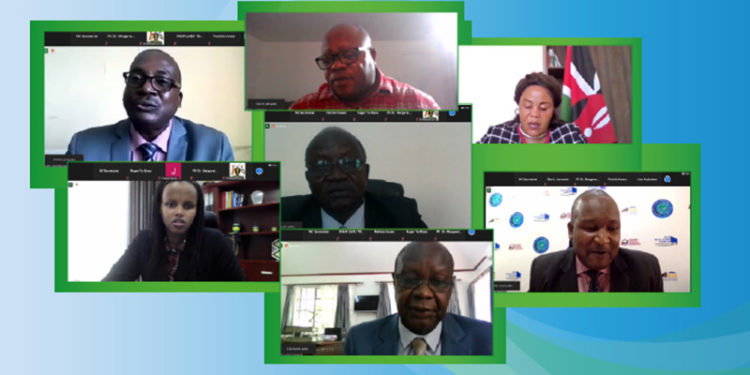East Africa region Member States tremendously reduced the Non-Tariff Barriers along the Northern Corridor during the COVID 19 Pandemic but some barriers requiring regional intervention still persist.
These include disparity in levying Road User Charges by the EAC Partner States; gaps in exchange of information used in the clearance of internationally traded goods among the Member States under the Single Customs Territory and geo-fencing of all transit sections linking the Central and Northern Corridor to support tracking of goods from origin to destination.
This emerged when the NCTTCA Executive Committee (EC) held its 50th meeting that took place online from 25th to 27th January 2021 anchored under the theme: “Towards a Resilient, Smart and Responsive Corridor for Trade and Transport Logistics.”
In the last half-year, the NCTTCA undertook several programmes despite the challenges posed by the COVID-19 pandemic. More specifically, the Secretariat saw increased automation of data collection and transmission with various industry players that includes ports and revenue authorities.
Shared data complemented by surveys conducted and mobile data collection from drivers enabled compilation of different performance reports, including a joint Northern and Central Corridors report, NCTTCA Secretariat said.
In its endeavours to transform the Corridor into a resilient, smart, and seamless transport-oriented development corridor, under COVID-19, the Secretariat has been convening a fortnight meeting with regional operation stakeholders to address specific facilitation challenges brought about by the pandemic.
“Unresolved issues were escalated for a way forward under the tripartite framework. The Secretariat also surveyed the conditions and potential for the use of the Naivasha ICD to reduce the cost of transport in the Northern Corridor region,” NCTTCA said during 50th EC Meeting.
Speaking during the online meeting, the Chairperson of the Executive Committee, Dr. Margaret Mwakima, Principal Secretary State Department for Regional and Northern Corridor Development in the Ministry of East African Community and Regional Development, Kenya, lauded the NCTTCA for its efforts in ensuring fluid transit transport while curbing the spread of Coronavirus disease.
NCTTCA also organised a retreat for drafting the Northern Corridor Black Spots Management Guidelines (NC- BSMG) on infrastructure development.
As a way forward, the EC directed NCTTCA to engage the Member States in addressing the imbalance of trade by encouraging free trade and value addition trade hubs along the Corridor and promoting inland water mode of transport. The Secretariat has currently collected information regarding Ports and Inland Waterways from the East African Community (EAC) platform for Lake Victoria’s development.
The Secretariat will work with member countries to mobilize the Corridor infrastructure projects and work with member countries with established PPP units to assist the other members with legislation and capacity building.
The EC Chair urged Member States and Stakeholders to increase coordination and cooperation in dealing with the integration of information systems; harmonization and simplification of documents, processes, and procedures required for trade and mutual recognition of licenses, certificates, insurance, and other transport trade-related documents.





